It sounds like a TabControl would give you what you want. Specifically, the property TabStripPlacement="Left" .
Example:
<Window x:Class="WpfTutorialSamples.Misc_controls.TabStripPlacementSample"
xmlns="http://schemas.microsoft.com/winfx/2006/xaml/presentation"
xmlns:x="http://schemas.microsoft.com/winfx/2006/xaml"
Title="TabStripPlacementSample" Height="200" Width="250">
<Grid>
<TabControl TabStripPlacement="Left">
<TabItem Header="General">
<Label Content="Content goes here..." />
</TabItem>
<TabItem Header="Security" />
<TabItem Header="Details" />
</TabControl>
</Grid>
</Window>
User Controls as View Content
If you change your child content pages from Windows to UserControls and refer to those user controls that should keep your codebase relatively clean.
Example :
Your user control with the "view" content. (Yes mvvvm databinding should work fine for this)
View
The view you would want render as a TabItem
<!-- Your SecurityView.xaml; -->
<UserControl
xmlns="http://schemas.microsoft.com/winfx/2006/xaml/presentation"
xmlns:x="http://schemas.microsoft.com/winfx/2006/xaml"
xmlns:d="http://schemas.microsoft.com/expression/blend/2008"
xmlns:mc="http://schemas.openxmlformats.org/markup-compatibility/2006"
mc:Ignorable="d">
<StackPanel>
<TextBox Text="Security View" />
</StackPanel>
</UserControl>
MainWindow The "main" window used to hold all of your tabs.
<!-- Your MainWindow -->
<Window x:Class="WpfTutorialSamples.Misc_controls.TabStripPlacementSample"
xmlns="http://schemas.microsoft.com/winfx/2006/xaml/presentation"
xmlns:x="http://schemas.microsoft.com/winfx/2006/xaml"
xmlns:local="clr-namespace:MyApp"
Title="TabStripPlacementSample" Height="200" Width="250">
<Grid>
<TabControl TabStripPlacement="Left">
<TabItem Header="General">
<Label Content="Content goes here..." />
</TabItem>
<TabItem Header="Security" >
<local:SecurityView />
</TabItem>
</TabControl>
</Grid>
</Window>

Source code and picture from :
https://www.wpf-tutorial.com/tabcontrol/tab-positions/
For more examples:
Different views/usercontrols on each tab of a TabControl
Diff between UserControl and Window
Window vs Page vs UserControl for WPF navigation?
For more on TabControl:
(https://learn.microsoft.com/en-us/dotnet/api/system.windows.controls.tabcontrol?view=netframework-4.7.2)

